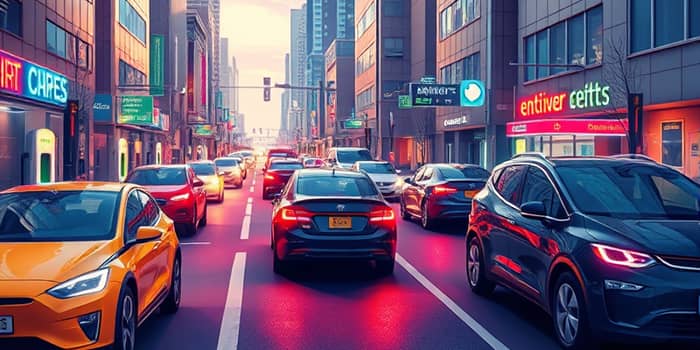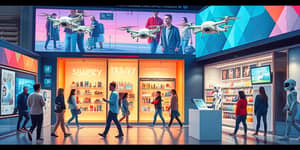
In a world driven by innovation and sustainability, the global automotive sector is navigating unprecedented transformation. From powertrains to consumer habits, industry leaders and new entrants alike are reshaping mobility for the decades ahead. This article explores the key themes, data points, and narratives defining this era of change.
Global vehicle sales are expected to rise by just 2.7% in 2025, reaching 98.7 million units. Headwinds include high vehicle prices, consumer debt levels, and ongoing policy uncertainties driven by tariffs and geopolitical tensions. Despite these challenges, demand in mature markets remains resilient.
In the United States, new-vehicle sales may hit 16.3 million units in 2025, the strongest figure since 2019. Motor vehicle and parts retail revenue stands at $1.53 trillion, supporting nearly one million manufacturing jobs. Yet volatility in global trade could reshape these forecasts.
Electric vehicles (EVs) are projected to account for 10% of all new car sales by 2025, climbing to 58% by 2040. In the U.S., Q1 2025 EV market share ranged between 7.5% and 9.6%, with nearly 300,000 units sold—an 11.4% year-over-year increase.
China dominates production, manufacturing 70% of global EVs in 2024. Europe has overtaken China as the largest market for new plug-in vehicles, while eight out of the ten fastest-growing EV markets are in emerging economies. Yet charging infrastructure is lagging, with just one new public port added per 42 new EV registrations in the U.S.
Consumer interest in plug-in hybrids has surged 238% since 2020, reflecting varied paths to zero-emission ambitions. Aggressive net-zero emissions targets and potential bans on new internal combustion engine (ICE) vehicles are accelerating the shift in many regions.
Legacy OEMs such as GM, Ford, Volkswagen Group, and Stellantis are intensifying their EV efforts. GM doubled its EV sales year-over-year, while Ford reported modest growth. Meanwhile, Tesla held a 43.4% share of the U.S. EV market in Q1 2025, despite a 9% drop in volume.
New entrants and luxury brands like Porsche, Audi, and Acura are diversifying the landscape with high-performance electric offerings. This significant ramp up in model availability—149 EV models in the U.S. by mid-2025—underscores a competitive market hungry for innovation.
The concept of the vehicle-as-a-smart-device is reshaping product development and customer engagement. Automakers are embedding advanced infotainment, connectivity, safety features, and autonomous technologies directly into vehicles through over-the-air updates.
Rapid integration of AI, IoT, and 5G connectivity is giving rise to software-defined vehicles (SDVs) that can evolve over time. Manufacturers are partnering with tech firms to develop ecosystems where cars become platforms for digital services, personalized experiences, and new revenue streams.
Stringent emissions regulations in the European Union, China, and select U.S. states are serving as catalysts for electrification. Governments are setting deadlines for ICE phase-outs and offering incentives that accelerate EV adoption.
However, trade disputes and proposed tariffs—particularly between the U.S., China, and the EU—pose risks to global supply chains. Elevated material costs and supply disruptions could stall progress and inflate consumer prices, testing industry resilience.
Consumers are increasingly valuing flexibility, connectivity, and affordability. Mobility-as-a-Service (MaaS) models—such as ride-sharing, subscriptions, and short-term leases—are gaining traction in urban centers and college towns.
Advanced manufacturing technologies like additive manufacturing and collaborative robotics are boosting production agility. Companies are optimizing supply chains with digital twins and real-time monitoring to mitigate risks from tariffs and geopolitical uncertainties.
Battery chemistry improvements, solid-state research, and sustainable materials are driving progress in EV range, safety, and recyclability. Legacy automakers and startups alike are forging partnerships to secure critical raw materials and scale next-generation cell factories.
While ICE vehicles will dominate global fleets for years to come, a profound transformation looms in the 2030s as EV adoption accelerates. Automakers that embrace flexibility, innovation, and ongoing adaptation will lead the next wave of growth.
The road ahead is defined by collaboration between policymakers, manufacturers, tech companies, and consumers. By balancing economic realities with environmental imperatives, the automotive industry can drive toward a future where mobility is accessible, sustainable, and exhilarating.
References













